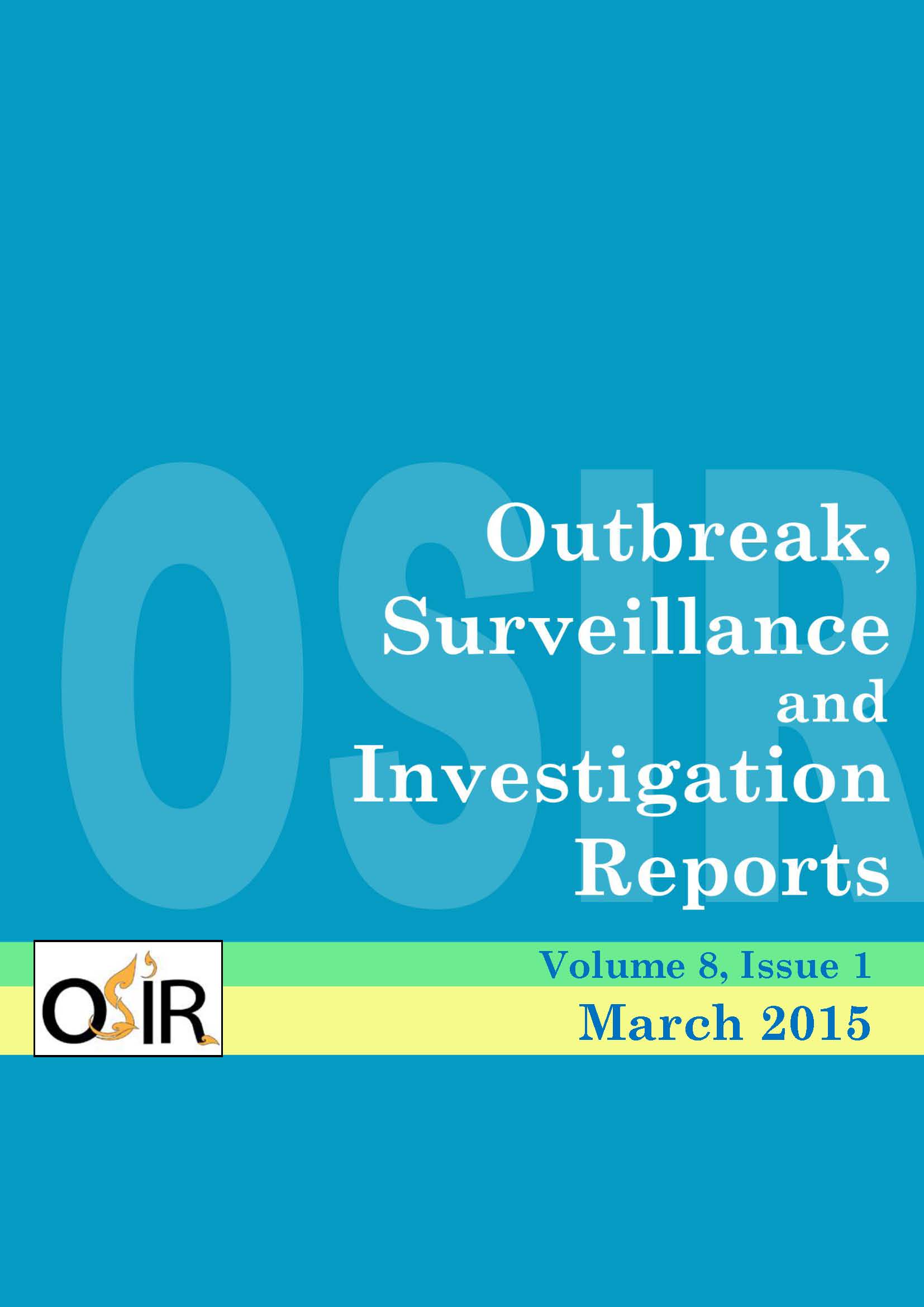Environmental and Social Conditions Prevailing Dengue Fever Outbreak in Pasir Mas District, Kelantan State, Malaysia, 2010
DOI:
https://doi.org/10.59096/osir.v8i1.263280Keywords:
dengue, Aedes, disease outbreak, case-control studyAbstract
A dengue outbreak occurred in Pasir Mas District, Kelantan, Malaysia during 2010. We conducted an investigation to describe the clinical and epidemiological characteristics of cases, determine risk factors for transmission and recommend appropriate control measures. A dengue case was defined as an individual with acute febrile illness and two or more of the following symptoms: rash, arthralgia, headache, myalgia, retro-orbital pain, hemorrhagic manifestation or leucopenia. Environmental surveys were done to search for Aedes species. A matched case-control study was done. From 5 May to 12 Aug 2010, total 465 cases were identified, with male to female ratio as 1.2:1. Most cases (34%) belonged to 11-20 years old group, followed by those aged 21-30 years (14%). Cases were mostly students (40%) or rubber tappers (15%). Aedes aegypti and Aedes albopictus species were identified in the district while many cases resided in areas with Aedes index of more than 1% and breteau index of more than 5%. Risk factors for getting dengue infection were presence of discarded containers within household premises (adjusted OR = 15.1, 95% CI = 5.41-41.97) and not using protective measures (adjusted OR = 3.9, 95% CI = 1.21-12.55). Control activities focused on mass clean-up and health education campaigns in affected communities. As a conclusion, this outbreak involved active individuals, and contributed by presence of breeding containers and not using personal protective measures.
References
World Health Organization. Dengue and dengue haemorrhagic fever. Geneva: World Health Organization; 2009.
World Health Organization. Dengue haemorrhagic fever: diagnosis, treatment, prevention and control. 2nd ed. Geneva: World Health Organization; 1997.
Laws of Malaysia. Prevention and control of infectious diseases act of 1988. Kuala Lumpur: The Commissioner of Law Revision, Malaysia; 2006.
Malaysia. Vector-borne Diseases Control Section. Disease Control Division. Ministry of Health. Guideline for operating dengue outbreak at state and district level. 2007 Aug 15.
Center for Disease Control and Prevention. Dengue and Aedes aegypti mosquito. 2012 [cited 2013 Dec 10]. <http://www.cdc.gov/dengue/resources/30jan2012/aegyptifactsheet.pdf>
Bio-rad Model PW40 & 41 Version 3 xxx2Y. Product Codes 85499 & 85508, User Manual
Teng AK, Singh S. Epidemiology and new initiatives in the prevention and control of dengue in Malaysia. Dengue Bulletin. 2001;25:7-14.
Norli R, Azmi MT. A case-control study on factors affecting the incidence of dengue fever in Johor Bahru. Journal of Community Health. 2008;14(2):57-67.
Chua KB. Epidemiology of chikungunya in Malaysia: 2006-2009. Med J Malaysia. 2010 Dec;65(4):277-82.
World Health Organization. Global strategy for dengue prevention and control. Geneva: World Health Organization; 2012 [cited 2013 Dec 10].
Downloads
Published
How to Cite
Issue
Section
License
Copyright (c) 2023 Outbreak, Surveillance, Investigation & Response (OSIR) Journal

This work is licensed under a Creative Commons Attribution-NonCommercial-NoDerivatives 4.0 International License.









